Jeff Barnhart: Hal, we’re taking a month break from our exploration of Moten to concentrate on the music of the band we compared to early Moten last month, the band that would become The Missourians, which offered us 12 sides recorded in NYC between June 3, 1929 and February 17, 1930. From 1925 to 1927, the band was known first as The Cotton Club Orchestra and then Andy Preer’s Cotton Club Orchestra. Even when it was no longer performing at the Cotton Club, the name continued until two things happened. First, Duke Ellington’s band premiered at the CC in 1927, and the club then insisted that only the resident band there at any given time would be able to use the name. Second, Andy Preer unexpectedly died in 1927, leaving the band with neither name nor leader.
Lockwood Lewis was hired as director, front man and vocalist, while the band chose a name referencing both its physical and stylistic origins. They then toured backing Ethel Waters and in 1929 landed a residency (minus Waters) at Harlem’s Savoy Ballroom, establishing a reputation as “the band to beat” in the musical duels in which the Savoy specialized. There are accounts they even slaughtered Ellington’s outfit with the sheer ferocity of their attack and power. The 12 sides they recorded do a good job of capturing this excitement.
I’ll share when and where I discovered them. I attended the small school Connecticut College in the 1980s. To satisfy part of my tuition, I selected a work-study position at the Greer Music Library, which houses a collection of printed and recorded works substantial enough that it is the envy of far larger institutions of higher learning. That meant I had access to all of the Music Library’s holdings, and after my shift was over I’d often overnight in the library, leaving only to catch some breakfast at the commissary. The highlight of my explorations of the treasures within was the Richard C. Shelley Jazz Collection. Shelley had collected thousands of jazz LPs, many of them released on labels from other countries.
Late one night I chose a Swaggie re-release of the Missourians to spin while I concentrated on my Physics 101 assignment (I never made it to 201). The sides were in chronological order, so the first two tunes I heard were “Market Street Stomp” and “Ozark Mountain Blues.”
The intro to “Market Street Stomp,” a brass fanfare provided by trumpeters R(oger) Q(uincey) Dickerson, Lammar Wright—he’s BACK!!—and trombonist De Priest Wheeler giving over to an ascending chromatic line provided by pianist Earres Prince and tubist Jimmy Smith, knocked me back in my seat! It was the swaggering two-beat sound I loved from the Moten band’s 1924-27 sides (I had just discovered them about three months prior, again at the Music Library) and I was in heaven!
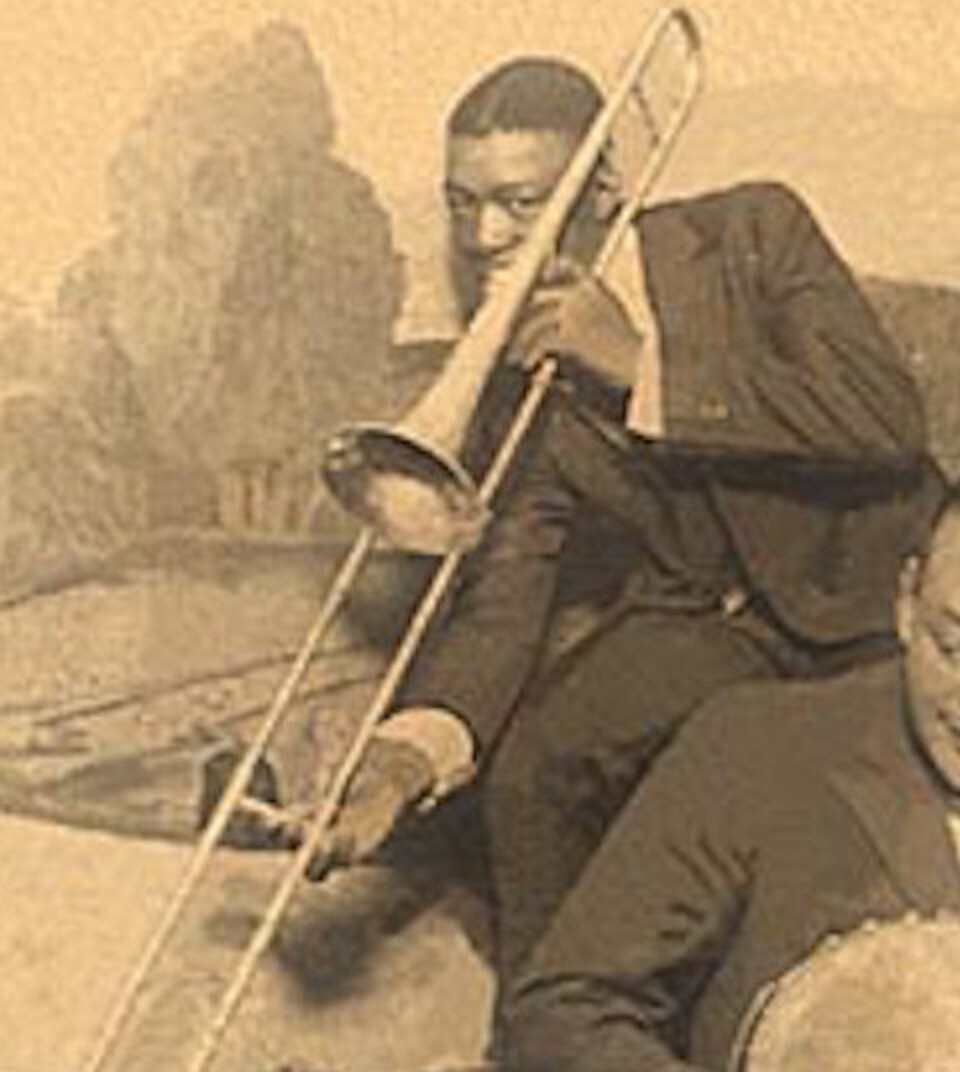
“Market Street” goes on to feature the brass in tight harmony playing over sustained accompaniment by the two alto and one tenor saxophonists—William Thornton Blue, George Scott, and Andrew Brown, respectively, who drop out of the final four bars to switch to three clarinets, then navigate a riff chorus with an incredible harmonized break, driven on by the hot strumming of banjoist Morris White. A 16-bar interlude features raucous, almost violent trombone blasting by Wheeler, into a chorus started by pianist White that would do Moten or Basie proud, completed by a spiky clarinet solo where Thornton Blue lives up to his surname, bending notes with abandon. A surprise tuba break leads into a full-chorus period tenor solo by Brown and THEN, Wright blares out an ascending chromatic line, with drummer Leroy Maxey matching his hemiola-rhythmed notes on choke cymbal. Breathtaking!
Lockwood Lewis needed something to do, so he brays out superfluous urgings that sound like a pissed-off parrot (Yaahh! Yaahh!) behind the second half of Wright’s wild-assed chorus. We soon forget him as the entire band hits a held note OUT of Wright’s and INTO the final, barely containable, borderline chaotic chorus, Maxey literally slamming the choke cymbal, and the entire group shuddering to a close. To borrow some Freudian terms, this side is ALL id and NO super-ego, though it must have taken some collective ego to strut through pieces like this! AND it doesn’t matter if this side, like several other tunes by the group, was based on the changes of “Tiger Rag.” So what? “Tiger Rag” used “Bill Bailey” changes and so forth back into the mists of time!
I promise not to wax so rhapsodically (or exhaustively) throughout this column, but DAMN that was a pivotal moment for me about what it means to play HOT!!!! Hal, my discovery of this uninhibited juggernaut band was a solitary one at 3:00 in the morning in a library basement in 1986. Yours had a livelier provenance. What’s your story regarding “Market Street Stomp?”
Hal Smith: I’ll never forget the first time I heard that! I was playing a jam session which included the great trombonist Dan Barrett. When we took a break, Dan hauled out his reel to reel recorder and put on a 7” tape marked “The Missourians,” written in Dan’s elegant Art Deco style. The instant the first notes of “Market Street” came blasting through the speakers, I was hooked! I mean, after hearing recordings by orchestras like Moten’s and Fletcher Henderson’s…this band played with the ferocity of tigers tearing apart rare steak! (Can you imagine what it would have been like to face The Missourians in a battle of the bands? Good heavens!)
By the way…Lockwood Lewis was from Louisville, Kentucky. He played alto sax on some of the greatest recordings by the Dixieland Jug Blowers—including that famous session from 1926 where Johnny Dodds sat in with the band!
Though “Ozark Mountain Blues” is not as fiery as “Market Street Stomp,” it is a great arrangement with lots going on. The “wake up, dawn is breaking” intro followed by a brass bass pickup leads into a first chorus with muted trumpet over syncopated phrases by the horns. There are solos by sax (a little tentative), trombone (take no prisoners) and trumpet (unmuted), single-string banjo as the horns play a syncopated riff with tiger-like sounds from the trombone, a more confident-sounding sax solo, then an unearthly muted trumpet riding over the final ensemble and a driving hot coda.
You know, I haven’t listened to the Missourians recordings for quite some time, so I have forgotten what a terrific HOT band they were. I love your enthusiasm for “Market Street Stomp” and will be curious to hear what you have to say about “Ozark Mountain.”
JB: Well, I love your description of the opening…it’s almost Grieg’s Peer Gynt for jazz reeds, isn’t it? We have to remember that the band in its residency was a show band, backing professional—and playing for amateur—dancers. That dramatic opening might have accompanied a stage bit. Everyone is playing hot and the trombone tiger is joined by tuba. The final chorus is one of the hottest 32-bars in jazz, pure abandon with that ghost trumpet by Lammar Wright. On my first hearing, I harkened to live performances in CT by the South Frisco Jazz Band I’d heard with Leon Oakley riding over Dan Comins’ strong lead on the final ensemble chorus.
“You’ll Cry For Me, But I’ll Be Gone,” which is actually the first strain of Moten’s “South” slowed waaayy down. Wright gets the composer credit but Moten wrote the melody. A funereal brass motif leads into a clarinet trio playing the A strain from “South” with brass back-up. Lockwood Lewis intones a Sprechstimme vocal but the ear gravitates to the scorching trumpet backup. Wheeler plays steaming trombone into a final chorus where reeds cover the theme while the trumpets play polyphonically in the background, savagely bending and smearing notes. The musical non sequitur is the arpeggiated banjo solo at the end but the heat beforehand allows us to forgive it. Hal, what do you hear on this take, and can you lead us into “Missouri Moan” with that dramatic cymbal opening intertwined with brass riffs?
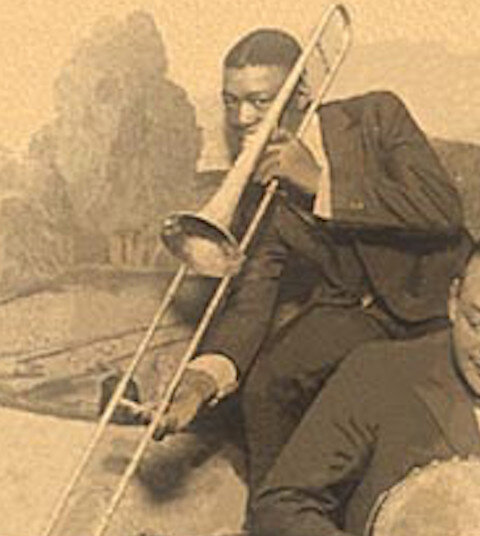
HS: My hat is off to the horns for keeping the tempo going through that barely-mobile tempo. That had the potential to really slow down. Lewis’ vocal is a little bit like Andrew Hilaire’s “speechifying” singing with Doc Cook. The restless trombone and the muted trumpet lead on the last chorus are the highlights for me. I remember listening to this and thinking “That sounds like another song” and then recognized the melody the reeds were playing. Lammar Wright was out of the Moten Orchestra when they recorded the hit record of “South.” Maybe this was his attempt to capitalize on the success of Moten’s composition???
On “Missouri Moan,” Leroy Maxey’s authoritative cymbal leads us into two choruses of open trumpet, with the other horns playing riffs underneath. That loping rhythm and the relaxed feeling of the whole orchestra reminds me of King Oliver’s recordings from the late 1920s. The riff played by the sax section turns up again—at a much brighter tempo—on “Scrunch Lo,” recorded by Banjo Ikey’s Windy City Five in 1935. This side also features another riff chorus by the brass, a clarinet trio, and some rhythmic uncertainty behind Earres Prince’s piano solo. Maxey’s cymbal punctuations remind me of the way Andrew Hilaire and Paul Barbarin played just the right figure at just the right time on the records with Doc Cook and King Oliver, respectively. What catches your ear on this side, Jeff?
JB: Wright’s trumpet solo manages to be hot and casual at the same time, but there are a few rhythmic bobbles in the first chorus from the banjo; I believe sometimes these cats were uncomfortable playing medium speeds slower than “tempo de tear-ass!” On this side and several others they sound as if they are playing arrangements they crafted themselves during rehearsal sessions; this makes sense, as other than stealing “South” from Moten, most of the sides they recorded were originals supplied by band members. This would also explain the preponderance of riffs.
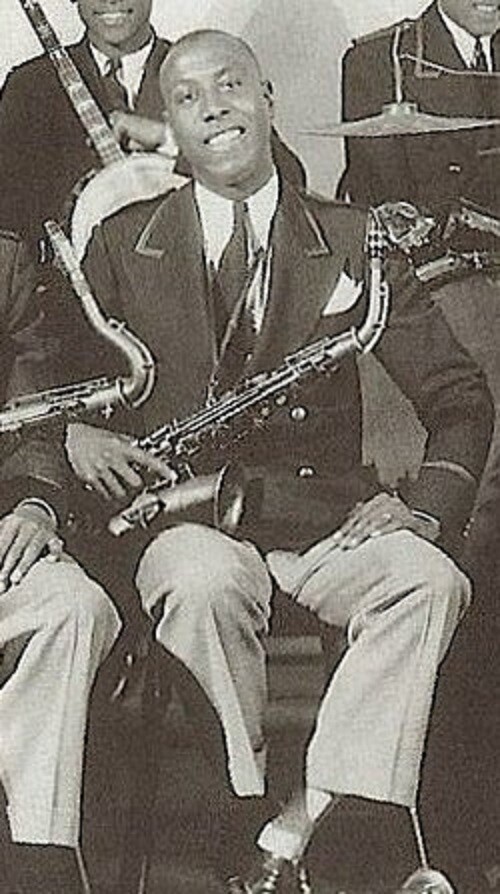
The band returned to the studio on August 1, 1929, to lay down four more sides: the stomping “I’ve Got Someone,” the strutting “‘400’ Hop,” the upbeat and showy, ironically-titled “Vine Street Drag,” and the lazy “Scotty Blues.”
There are some extraordinary musical moments on these sides! On “I’ve Got Someone,” for me the standouts are a high-register piano solo where Prince is NOT playing bass notes—his left-hand chords are too legato for stride at this tempo, a stylistically forward sounding alto solo by Thornton Blue and an out-chorus filled with riffs from all horns (Henderson’s influence here) culminating in a surprise syncopated ending! Hal, what are your highlights on this side, and can you lead us into the next selection?
HS: It’s certainly a departure from the songs we have already heard; much more of a 1920s popular song than a variation on “Tiger Rag” although this arrangement transforms it into a riff number like “Lawd, Lawd” or “Off To Buffalo.” It was written by Charles H. Brookes, who I know absolutely nothing about! You mentioned the piano solo. I particularly like that goofy break he took. Thornton Blue’s alto solo has elements of early Johnny Hodges, Crawford Wethington, Charlie Holmes…all good sounds! And the sax solo on the out-chorus really reminds me of the way Junie Cobb played. It’s an excellent arrangement and the Missourians really dug into it.
“400 Hop” has a bouncy feel, very good trombone and clarinet solos, a bubbly sax chorus, hot muted trumpet over backbeats and Leroy Maxey slipping in some licks on his temple blocks. I don’t think this side has as much going on as some of the others, so why don’t we move along to “Vine Street Drag?”
That one brings us back to the “Tiger Rag” form. After the first ensemble, there is an extended modulation, a tricky sax section half-chorus, and hot solos by trombone, banjo, and tenor. Another modulation (with more temple blocks from Leroy Maxey); a split chorus between trumpet and alto, some wild clarinet from Thornton Blue and a neat coda—with choked cymbal for an exclamation point! Overall, this reminds me of the sound of Duke Ellington’s Cotton Club Orchestra—though with brass bass instead of string bass. What do you hear on this one, Jeff?
JB: I love the “Charleston” rhythm behind the trombone solo and the banjo has an “Ikey Robinson” sound. I am hearing more (if possible) heat and also polish coming from this band in the short time between June and August! With all of the extended modulations and the only half-chorus closing ensemble, this one might have been used to accompany onstage dancers for a routine.
Not so “Scotty Blues!” The band really grooves in this slow tempo! Technique meets torrid here, with a quasi-“Rhapsody-in-Blue” arpeggiated clarinet intro, trumpet signifying over held notes from the other horns, a laconic alto turn, a brass fanfare riff with piano fill-ins and a striking banjo solo (which I recall was lifted as the melody of a blues recording in a much later era…ideas about where and who?). Two clarinet trio riff choruses round this one out, with a one-bar trumpet coda into a descending 9th chord sequence (the tune is in Bb) from Bb9 (the tune is in Bb) to Ab9. Weird ending to a lovely blues! Anything catch your fancy on this, Hal?
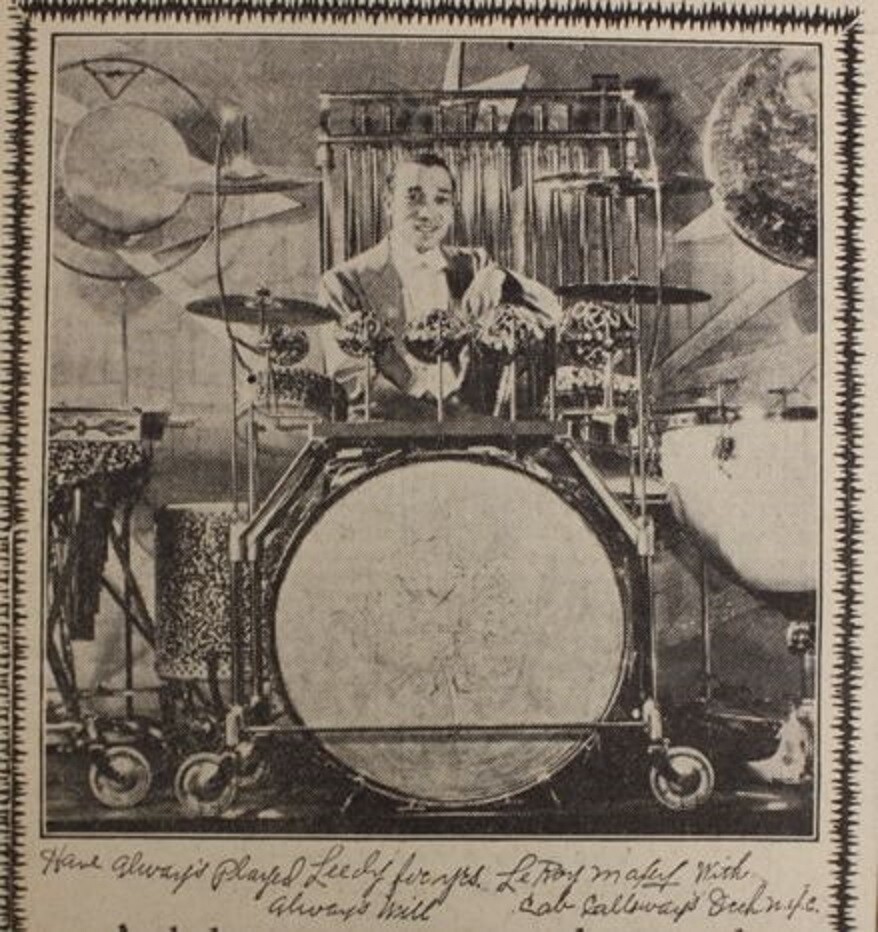
HS: “Scotty Blues” really reminds me of the 1929-1930 records by Jelly Roll Morton’s Red Hot Peppers—especially the sound of the clarinet and the piano “chimes” on the introduction. You covered the routine. All I can add is how much I like Leroy Maxey’s choke cymbal accents, the clarinet trio and the sonorous sound of the brass bass. Don’t worry, one of us will accidentally stumble onto the source recording of that melody played by Morris White on the banjo solo!
JB: And YOU did! You found 1925’s “Gravier Street Blues” by Clarence Williams as the inspiration for that solo! Nice! I was asking for the tune that some later jazz musician based on White’s solo but the source is always good! Can anybody reading this find the tune I am referencing and who recorded it?
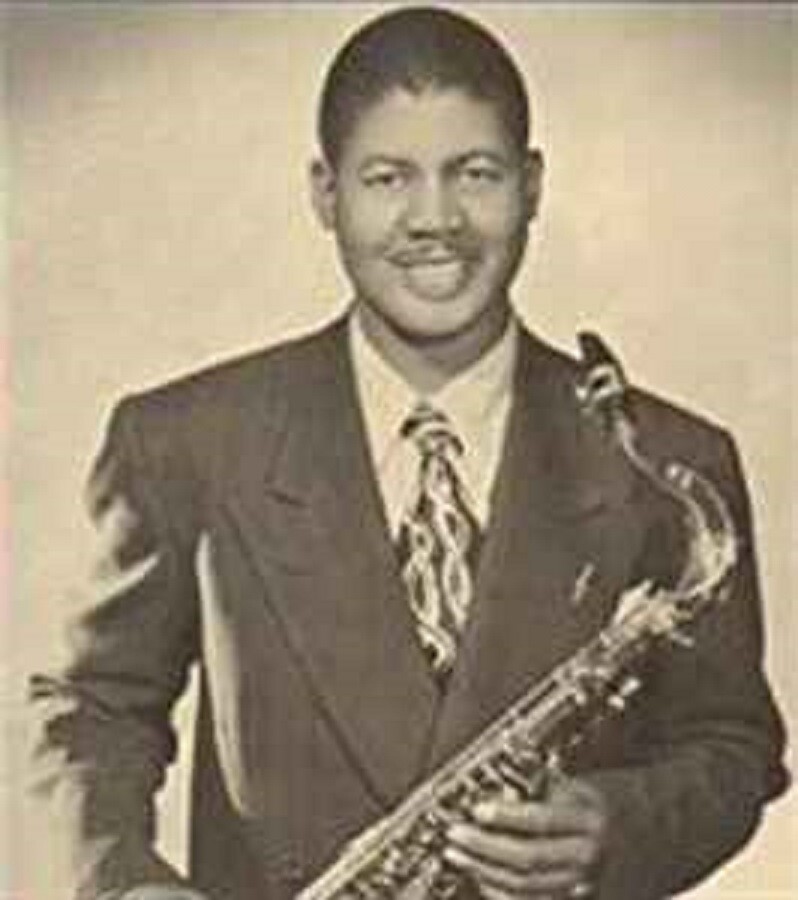
Let’s move to the Missourians’ final recording date under their own steam. With only one change in personnel—Andrew Brown is replaced by Walter Thomas playing clarinet and both tenor and baritone saxes—the band reconvened in the studio on February 17, 1930 for four more sides: the ebullient “Two Hundred Squabble,” the menacing, minor-key “Swingin’ Dem Cats,” the surprise-filled “Stopping the Traffic” that contains my FAVORITE out-chorus by a territory band anywhere at anytime!, and the derivative (but with some good playing) “Prohibition Blues.” Hal, please take first dibs on “Squabble.”
HS: The band sounds less raucous and swings more on “Two Hundred Squabble.” I hear the beginnings of the Cab Calloway Orchestra, which would include Walter “Foots” Thomas as one of the key musicians. While this side doesn’t threaten to melt the wax, there is still plenty of hot music. The clarinet solo over the stoptime at the end is a throwback to earlier times, but it still works. Jeff, do you hear the difference in the sound that I am referring to?
JB: I sure can! There is a sophistication found here that is missing in 1929. I also hear the swing that the Moten outfit was attaining by this period (more on that in next month’s column!). There is more timbral diversity as well (De Priest Wheeler takes a great muted solo á la Ellington’s Tricky Sam Nanton) and a soaring clarinet obbligato over the final riffing ensemble that reminds me of “Daybreak Express.” As much press roll from Maxey as choke cymbal, too!
I’m glad you brought up Cab, Hal. In October 1929 at the Savoy Ballroom, the Missourians, led by Lockwood Lewis, were pitted against the visiting Alabamians—the resident band at Chicago’s Merry Gardens, led by Cab Calloway. The winners of the band battle? The Missourians and…Cab Calloway! This resulted, after Cab had quit his own band, made a name for himself in the Broadway revue, Hot Chocolates and subsequently toured with that show around the country, in his returning to New York early in 1930 to join forces with—at the urging of the Savoy’s manager Charles Buchanan—the Missourians, the band with whom he would perform and record for the next four years.
“Swingin’ Dem Cats” is a harmonically static tune that swings like mad, giving everyone a chance to play hot! After the first chorus, an inventive modulation brings us to a sax trio interlude into a nice trumpet solo with plunger mute, then a trombone interruption and another modulation, a nice baritone sax solo by “Foots” Thomas, another trombone interlude where Wheeler overreaches at the start and eventually sounds like Kid Ory on speed, and a key change into swinging clarinet over horn riffs. In the interlude, the soloist finally fully states the theme that has been flirted with earlier in the recording: “The Entrance of the Gladiators” by Julius Fučik! For me, this isn’t the most interesting of their sides, but you might hear something I didn’t, Hal.
HS: I agree that this record isn’t up to the level of the sides we have already discussed. This is kind of a “kitchen sink” arrangement, or maybe a better metaphor is throwing spaghetti against the wall to see what sticks! But I do like the calming effect of the muted trumpet amidst the chaos.
Let’s move on to “Stoppin’ The Traffic.” Right away, you’ll notice that it is based on Jelly Roll Morton’s “Milneburg Joys.” However, this arrangement sounds a little bit awkward until the Missourians reach the trio strain. Then we hear excellent solos by trumpet and tenor sax, an arranged brass passage, a well-played split chorus between alto and trombone, a Chicago-like “flare” and dueling riffs on the first half of the out-chorus. And as you mentioned earlier, Jeff, that ending keeps you guessing until the last whistle!
JB: Yeah, the first part is well-played, but there are too many breaks to gain any traction. When we hit the trio those solos are awesome! Inexcusable however is not re-recording the tune to fix the horrible intonation and wrong notes from the brass in the first half of their arranged section—it’s almost like it took them by surprise!! All for me is forgiven when we get to that final out-chorus; I especially love the tuba lines Smith plays on this chorus emphasizing beat four into beat one of the next measure, and that low “F” he blasts out on bar 24 of each chorus of the trio makes me jump every time!
After such a buoyant, perfectly paced stomper, the final instrumental recording the Missourians cut seems anti-climatic; it’s an almost mantra-like, reefer-smoking two chord dirge that must have put dancers in a trance. Even if “Prohibition Blues” is derivative of “St. James Infirmary,” there is some great playing here. What are the highlights for you?
HS: It has almost an Ellingtonian (or perhaps a “Minnie The Moocher”) aura. The band had still not taken care of the intonation problems, but there are very good solos by trumpet (muted and open), clarinet and baritone.
The late Frank Powers once told me that he really enjoyed Thornton Blue’s clarinet playing because it reminded him of Frank Teschemacher’s sound! I can definitely hear that on Blue’s spiky commentary behind the muted trumpet, on the penultimate chorus (with a different chord structure—similar to the minor verse of “St. Louis Blues”).
I agree with you that “Prohibition Blues” is a bit of a letdown after “Market Street Stomp,” “Ozark Mountain Blues” and the other musical blowtorches we listened to. But at the same time, I enjoy hearing the band developing a new sound. All it needs now is Mr. Calloway out in front!
JB: And some time let’s pick up the band as led by Cab from 1930-34! For next month let’s return to the Moten band and see what they get up to between 1928-1932! There are a LOT of changes happening with THAT aggregation. Always a pleasure, my friend! Happy listening!
Hal Smith is an Arkansas-based drummer and writer. He leads the El Dorado Jazz Band and the
Mortonia Seven and works with a variety of jazz and swing bands. Visit him online at
halsmithmusic.com
Jeff Barnhart is an internationally renowned pianist, vocalist, arranger, bandleader, recording artist, ASCAP composer, educator and entertainer. Visit him online atwww.jeffbarnhart.com. Email: Mysticrag@aol.com























